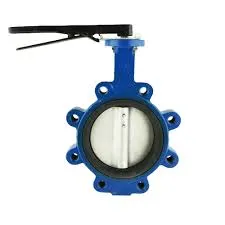നവം . 28, 2024 00:33 Back to list
Durable Cast Iron Foot Valve for Reliable Water Flow Control and Efficient Drainage Solutions
Understanding Cast Iron Foot Valves A Vital Component in Fluid Systems
Cast iron foot valves play a crucial role in various fluid systems, particularly in water and sewage management, irrigation, and industrial applications. These valves are designed to control the flow of liquids, ensuring efficient operations and protecting against backflow, which can lead to contamination and system failures. This article explores the features, benefits, installation, and maintenance of cast iron foot valves, highlighting their importance in fluid management systems.
What is a Cast Iron Foot Valve?
A foot valve is a type of check valve that is installed at the bottom of a pump suction line to maintain prime and prevent backflow. Cast iron, known for its durability and corrosion resistance, is the material of choice for manufacturing these valves. The foot valve consists of a mesh screen, which keeps out debris and solids, and a hinge mechanism that allows it to open and close based on pressure differences. When a pump operates, the foot valve opens to let water in; when the pump stops, the valve closes, preventing the water from flowing back out.
Advantages of Cast Iron Foot Valves
1. Durability and Strength Cast iron foot valves are known for their ability to withstand high pressures and harsh environments. Their robustness makes them suitable for various industrial applications, including mining, agriculture, and municipal water systems.
2. Corrosion Resistance Cast iron has a natural resistance to rust and corrosion when properly coated or treated. This feature extends the life of the valve and reduces the need for frequent replacements, making it a cost-effective choice in the long run.
cast iron foot valve

3. Efficient Flow Management The design of foot valves allows for optimal fluid control. By preventing backflow, they ensure that the pump remains primed, enhancing the efficiency and reliability of the entire system.
4. Ease of Installation Cast iron foot valves are relatively easy to install, and their heavy weight can help them stay in place, even in turbulent water conditions. Proper installation is key to their optimal performance.
Installation and Maintenance
The installation of a cast iron foot valve requires careful attention to detail. It should be positioned vertically at the lowest point of the suction line, ensuring that it functions correctly. It's crucial to ensure that the valve is adequately sealed and that the mesh screen is free from obstructions to allow for optimal flow and filtration.
Regular maintenance is essential to ensure the longevity and performance of foot valves. This includes routine inspections to check for signs of wear or damage, such as corrosion or blockages in the mesh screen. Cleaning the screen periodically can prevent clogs and ensure that the valve operates smoothly.
Conclusion
In summary, cast iron foot valves are an indispensable component in various fluid management systems, providing durability, efficiency, and reliability. Their ability to prevent backflow and maintain pump prime is essential in protecting water quality and ensuring the effectiveness of fluid systems. Whether used in agricultural applications, municipal water management, or industrial processes, understanding the role and maintenance of cast iron foot valves can lead to better system performance and longer operational life. Investing in quality cast iron foot valves and adhering to proper installation and maintenance practices can significantly enhance the efficiency of fluid management operations, allowing for sustainable and effective use of resources.
Share
-
Y Strainers: Protecting Your Pipes with PrecisionNewsAug.27,2025
-
Wafer Type Butterfly Valves: Reliable Flow Control SolutionsNewsAug.27,2025
-
Wafer Type Butterfly Valves: Essential Components for Efficient Flow ControlNewsAug.27,2025
-
Reliable Flow Control with High-Quality Check ValvesNewsAug.27,2025
-
Reliable Flow Control with Gate ValvesNewsAug.27,2025
-
Innovative Check Valves for Reliable Flow ControlNewsAug.27,2025


